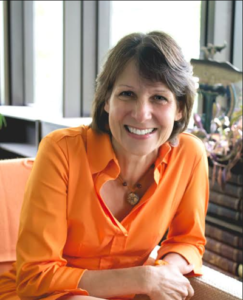August 2021 Director’s Corner

Beyond Pipelines
What do diversity in the workforce, the infrastructure bill, and natural gas have in common? All have been described as complex interplays of pipelines, leaks, and capacity. In all instances, there is something of value being carried from one point to the next, whether talent, water, or energy; leakage represents a significant loss of value and can potentially be harmful; capacity can be limiting and a barrier to our desired end point. But what if that comparison and language does us more harm than good in our efforts to bring about a more diverse and inclusive environmental workforce? The term “pipeline” implies one channel with a defined entry and exit point, with no care given to the material inside, and simple monitoring of capacity alone. I’m coming to embrace the term “movement” as a better descriptor of what we need to support and enhance our path to a diverse and inclusive environmental workforce, so that we can ultimately reach our vision of a sustainable future.
What does movement imply that pipeline does not? A grander vision, a deeper reflection, a more substantive basis than a pipeline. I first seriously encountered the definition of a movement 14 years ago, in the book “Blessed Unrest”, and I have been frequently reminded of its subject lately. It described a movement that no one had noticed, not even the people involved; the movement was composed of an unknowable number of citizens and mostly ragtag organizations that arose and then set across varying lengths of time. It was a movement of shared, yet largely unstated, beliefs; the author, Paul Hawken, described it as follows: “Life is the most fundamental human right, and all of the movements within the movement are dedicated to creating the conditions for life, conditions that include livelihood, food, security, peace, a stable environment and freedom from external tyranny.” In 2015, the movement became articulated in the 2030 Agenda for Sustainable Development, adopted by the 193 United Nations Member States. It provides a shared blueprint for peace and prosperity for people and the planet, now and into the future, through the 17 Sustainable Development Goals (SDGs), which are an urgent call for action by all countries – developed and developing – in a global partnership. Global partnership implies much more than a pipeline, and points to a call for a movement as the only vehicle that can get us to this desired future.
In yet another call for the insufficiency of a pipeline, a Washington Post Op-Ed posted by columnist Perry Bacon identified the fallacy that an insufficient pipeline was a problem for finding diverse talent, and recounted the success that businesses and organizations were having in looking beyond them to recruit underrepresented colleagues, leaders, and candidates. As Bacon recounts, “What these institutions discovered, as education policy writer John Warner says, is that “talent is abundant.” This suggests that the pipeline is the problem, but not in the way we envisioned it: our conceptualization that there is one channel, one conveyor belt of preparation on which to find talent, is the thing that we must de-construct. We need to look to the movement, to all of the places inside it that expertise, ideas, creativity, and the people who carry them live. At the same time, we need to make those people more visible to the rest of the world.
So that is what C-StREAM, the program described herein, endeavors to do – to build a movement, not a pipeline, and to make visible the potential embedded in young and aspiring environmental professionals that live in that movement. I have had the great and good fortune of experiencing the hope that they bring, and I’m anxious to share that with you through their stories. While we endeavor to maximize the ripple effect of this program, I’m also keenly aware that one program, alone, is insufficient, and so I’m also embedding a plea for us to recognize one another as partners in the movement, to share our approaches and ideas and expertise. Because a pipeline simply won’t do.
“Evolution is not about design or will; it is the outcome of constant endeavors made by organisms that want to survive and better themselves. The collective result is intoxicatingly beautiful, rife with oddities, and surprisingly brilliant, yet no agent is in control. Evolution arises from the bottom up–so, too, does hope.”
― Paul Hawken, Blessed Unrest: How the Largest Movement in the World Came Into Being and Why No One Saw It Coming
